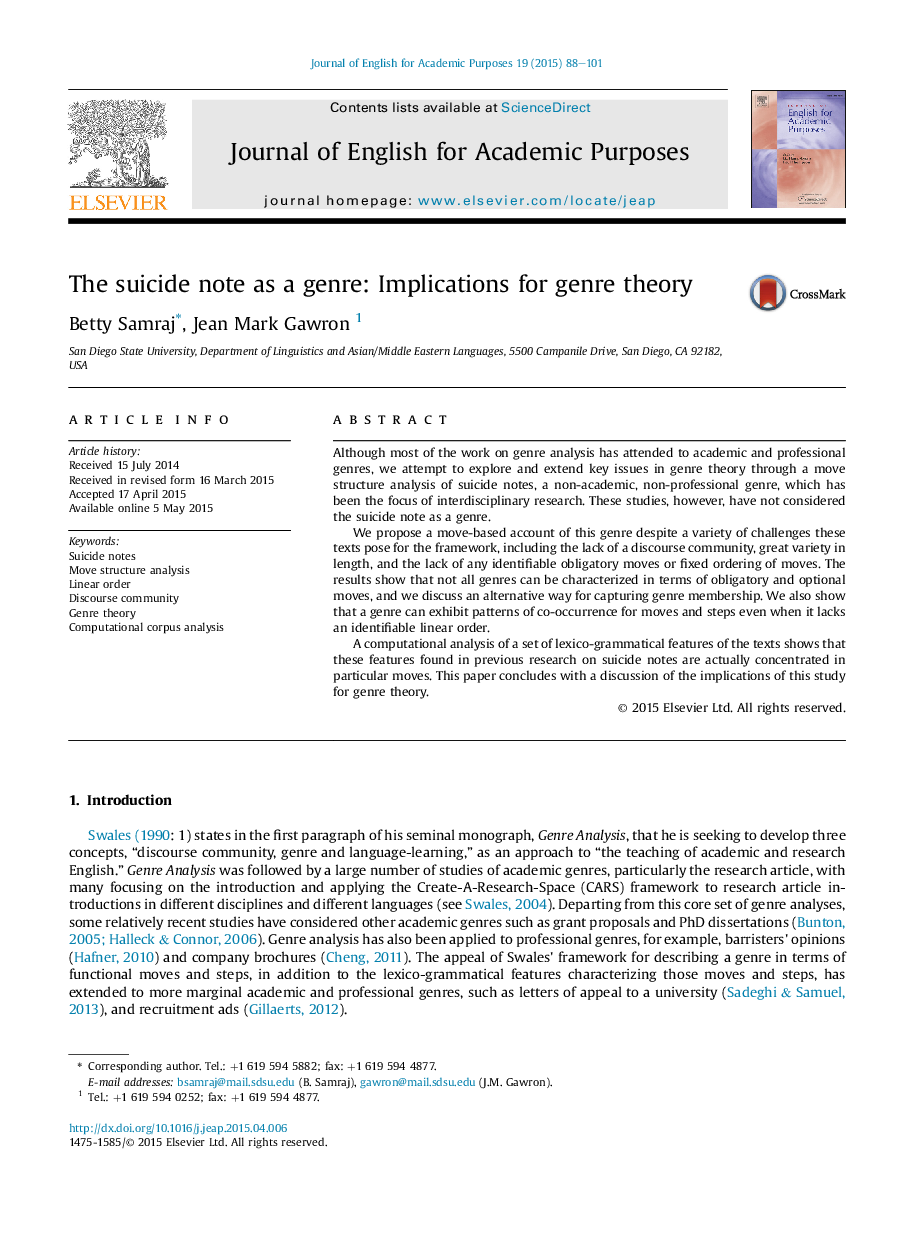| Article ID | Journal | Published Year | Pages | File Type |
|---|---|---|---|---|
| 360192 | Journal of English for Academic Purposes | 2015 | 14 Pages |
•We explore genre theory by a move structure analysis of suicide notes as a genre.•Not all genres can be characterized in terms of obligatory and optional moves.•An alternative way to capture genre membership is in terms of core and minor moves.•A genre with no clear linear order can exhibit co-occurrence patterns for moves.•LIWC analysis shows certain lexical features are concentrated in particular moves.
Although most of the work on genre analysis has attended to academic and professional genres, we attempt to explore and extend key issues in genre theory through a move structure analysis of suicide notes, a non-academic, non-professional genre, which has been the focus of interdisciplinary research. These studies, however, have not considered the suicide note as a genre.We propose a move-based account of this genre despite a variety of challenges these texts pose for the framework, including the lack of a discourse community, great variety in length, and the lack of any identifiable obligatory moves or fixed ordering of moves. The results show that not all genres can be characterized in terms of obligatory and optional moves, and we discuss an alternative way for capturing genre membership. We also show that a genre can exhibit patterns of co-occurrence for moves and steps even when it lacks an identifiable linear order.A computational analysis of a set of lexico-grammatical features of the texts shows that these features found in previous research on suicide notes are actually concentrated in particular moves. This paper concludes with a discussion of the implications of this study for genre theory.
